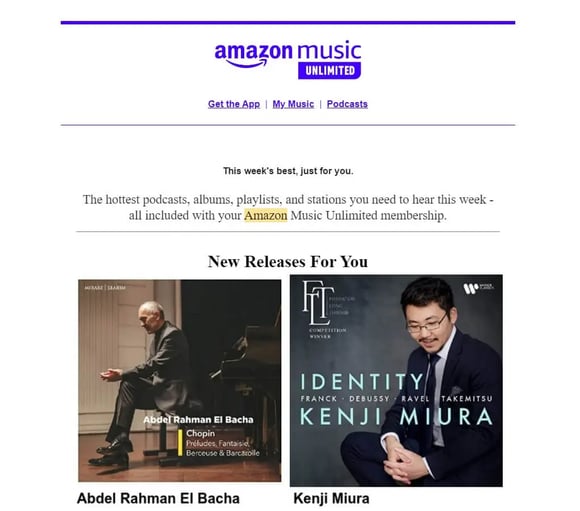The Ultimate Guide to the Best eCommerce Loyalty Programs: Key Features to Include
Transform your eCommerce & discover the top loyalty program features every business needs to enhance their customer retention and drive success.
Delve into the world of eCommerce customer retention and learn about 9 top strategies that can help you build loyalty and drive online success.

Building a thriving eCommerce business means investing in your customers. And while this might seem like a no-brainer, you’d be surprised at the number of businesses that don’t invest enough time and energy into retaining their customers.
Every year businesses lose between 10% – 50% of their customers, costing them over $75 billion in revenue. This can make or break some businesses.
But what are the best retention strategies for eCommerce businesses? And which ones never fail to deliver results?
Here are nine of the most effective techniques eCommerce businesses can use to keep customers coming back for more.
.webp?width=512&height=288&name=unnamed-5-1%20(1).webp)
User-generated content is any kind of content that is created by your users, for your users. This includes things like product reviews, social media posts, blog comments, videos, and so on.
While user-generated content has been around for years, social media has taken it to a whole new level. Now, brands are actively using this type of content to connect with their customers and build a community around their products or services.
This type of content is one of the most powerful strategies you can harness to improve customer retention rates since it allows you to:
The action camera company GoPro is an excellent example of a brand that has tapped into its users to build a community.
As their customers go on their adventures and use their products, they are encouraged to share their videos and images in exchange for rewards. Additionally, GoPro creates specialized challenges that gamify their user’s submissions.

From there, GoPro takes the content created by their customers and uses it to create even more content for their social media accounts, especially on YouTube.

On top of helping them connect with their customers and build a strong community of brand advocates, they also never have to worry about running out of content ideas since they’ve established a steady stream of submissions!
The key to turning one-time buyers into lifelong customers is demonstrating appreciation for their business, and a loyalty program is one of the best ways to do that.
These programs offer incentives for customers to continue doing business with your company.
They can take many different forms, but they’re typically structured to allow customers to earn rewards or points for making purchases and then redeem them for discounts or freebies.
There are many benefits to establishing a customer loyalty program, including:
Gigi Pip’s rewards program is an excellent example of a successful loyalty program.
Customers who sign up for the program earn loyalty cash for completing specific actions, such as shopping and sharing. They can then use this cash to receive a discount on their next purchase.

What makes their program so successful is that they make their rewards program easy to use and highly visible. No matter what page a customer is on, they can access their rewards through a widget at the bottom of the screen.

Patch’s loyalty program will engage your customers and help you build lifelong relationships.
See how it works:
People want to feel confident in their purchase which is why social proof is essential to any retention strategy. After all, if other people are buying from you, it must mean you’re doing something right.
While the definition of social proof is somewhat technical, it’s basically the idea that we are more likely to do (or buy) something if we see that others are doing it too.
There are several different types of social proof, but one of the most effective for eCommerce businesses is testimonials or reviews. They provide validation of your product or service, which in turn, makes your brand more trustworthy.
In addition to enhancing trust and credibility with customers, social proof has many other advantages when used in eCommerce, such as:
A great example of this is Sunday Lawn, an online retailer that specializes in selling eco-friendly lawn products. They wanted to find a way to increase sales and conversion rates on their website, so they decided to utilize customer testimonials.

By featuring customer reviews, testimonials, photos, and videos, they’ve created a strong connection with their audience that will keep them coming back for more.
While there are many ways to gather social proof, one of the most effective ways is to automate review requests as we do at Patch. This way, your request goes out to your customers at the perfect time, and you don’t have to worry about it.
The most successful companies are those that take advantage of their customers’ referrals to grow their customer base and enhance customer loyalty.
Referral marketing is a promotional strategy where customers are incentivized to refer new customers to a business. This can be done in a variety of ways, such as offering discounts, monetary rewards, or providing access to exclusive products or services.
There are many benefits of referral marketing, such as:
One of the best referral programs out there today is PayPal. While other companies were spending thousands on advertising, PayPal invested in their clients, and it paid off—big time.
They offer a rather simple dual-sided reward: You get $10 for referring a friend, and your friend gets $10 for joining. It’s that simple.

One of the most popular ways to incorporate referrals into your retention strategy is to combine them with your loyalty program as we do at Patch. That way, customers are encouraged to complete the referral for additional rewards.
When it comes to retaining eCommerce customers, win-back campaigns are a tried and true strategy that always delivers results.
Winback campaigns, also known as reactivation campaigns, are designed to rekindle relationships with lapsed or inactive customers and get them shopping with you again. They do this by offering incentives to entice them to return.
On top of being really good at helping you identify why your customers left you in the first place, they also:
Wayfair, an online retailer specializing in home furnishings and décor, has run several win-back email campaigns that targeted customers who hadn’t shopped with the company in at least 90 days.
Some of their series start with a soft offer (10% off the first order), followed by a series of progressively more aggressive offers, culminating in a final offer of 20% off plus free shipping. While others are more straightforward, like this one:

One of the best ways to run win-back campaigns like this is to automate the customer journey. That way, customers automatically receive personalized emails in their inboxes before they have a chance to abandon the brand completely.
In recent years, abandoned cart alerts have become increasingly popular—and for a good reason! They are a powerful eCommerce retention strategy that can help you recover lost sales and boost your bottom line.
Abandoned cart alerts are exactly what they sound like—a message (email, SMS, or both) that is sent to a customer who has abandoned their shopping cart.
These messages remind the customer that they have items in their cart that they haven’t yet purchased, and they often include a link back to the cart so that the customer can easily finish their purchase.
Beyond helping you recover lost sales, abandoned cart alerts also help you:
To better understand how this works, let’s look at a playful example from Casper, an online bedding retailer.

They use colorful copywriting and customer reviews to entice customers to return to their carts.
Nowadays, many businesses are utilizing SMS in conjunction with email notifications. Why? Because SMS alerts notify customers instantaneously versus getting lost in an inbox.
To do this, they use time delays so customers aren’t bombarded with alerts. Intuitive tools, like Patch, make it easy to build out an abandoned cart process with just a few clicks. We use a drag-and-drop editor so you can build out the perfect workflow with ease.
By tailoring your communications to the specific needs and interests of your customers, you’ll be able to engage them more effectively and keep them coming back for more.
Personalization is the process of tailoring content to meet the specific needs and interests of an individual user. This could include anything from showing relevant products and offers to customizing the user experience on your website.
Not only does this ensure that they are more likely to actually read and engage with your messages, but it also:
After all, customers want to feel like they are being treated as individuals, not just another number.
A great example of personalization is Amazon Music’s weekly roundup emails. These emails are a carefully curated list of recommended artists, albums, playlists, podcasts, and more.

To curate these lists, Amazon taps into your browsing and listening history so they can make relevant recommendations.
Nurture campaigns work because they focus on building relationships with your customers rather than pushing products.
Nurture campaigns are a series of emails or other communications designed to build a relationship with a customer. They can include helpful tips, special offers, or just general information about your product or service.
There are many benefits to using nurture campaigns as part of your eCommerce retention strategy, including:
Accio!, a magical subscription service, uses nurture campaigns to keep customers engaged with their brand. They send targeted emails and SMS messages to customers to help foster new relationships.

Accio! even sends a contact profile (complete with its logo) with their first text message so they can easily add them to their contacts. By sending relevant content to customers, Accio! is able to keep them engaged with their brand and increase sales.
To be a successful eCommerce business, you need to offer your customers an experience that is consistent and reliable. And that starts with taking an omnichannel approach.
With an omnichannel approach, every sales channel is integrated (websites, mobile apps, and more) to provide customers with a seamless shopping experience, making doing business with you as easy as possible.
There are many benefits to taking an omnichannel approach to retention, including:
One company that has successfully implemented an omnichannel retention strategy is Amazon.

Amazon has a presence across multiple channels, including its website, mobile app, and brick-and-mortar stores. And it offers a consistent experience across all of them.
If you’re looking for a way to take advantage of all these retention strategies, then Patch is the solution for you.
With our platform, you get all the tools you need to manage your retention program under a single login. That means no more switching between different software programs or trying to remember multiple usernames and passwords.
We have a wide range of features that will help you with retention campaigns, such as:
But the best part is that our analytics dashboards give you unparalleled insight into your customer retention efforts. See a sample here:
So if you’re looking for an end-to-end eCommerce customer retention solution to help you keep your customers coming back for more, look no further.
Reach out to our team today and set up a free demo.
Transform your eCommerce & discover the top loyalty program features every business needs to enhance their customer retention and drive success.
Peloton blew it. Due to the pandemic, people were locked in their houses, and wanted to work out (some of …
Transform your business with the best customer loyalty program software in 2023, drive growth, boost retention rates and overall satisfaction.